Iker De la Hoz, 08.03.2021
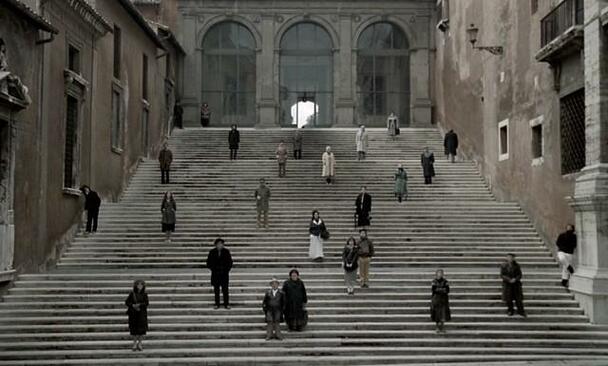
The COVID-19 situation has opened many debates about our cities being ready to handle this new reality and whereas this is going to create an impact on the future of architecture and urbanism or not.
Actually, this is not the first time an illness made changes in the way we use and think about the cities, it has been happening throughout history. Some European main cities, such as London, Paris or Barcelona drastically changed in the last centuries and largely for health reasons.
In the case of Barcelona for example the Cholera situation (and the dense population) in 1860 forced the government to take the decision of having a huge urban plan for this city, the plan was developed by the ingenier Ildefons Cerdá and he proposed a low-density city based on a grid. Due to speculation and capitalism the original plan was not respected and Barcelona ended up being one of the most dense cities in Europe. For some years now, the city council has been working on a strategy called “Superilles” (“Superislands”) to reduce the density by grouping 9 blocks of this grid and giving the in-between road space to pedestrians and little commerce. With the current situation this strategy has proven its effectiveness and the need for it in the future years.
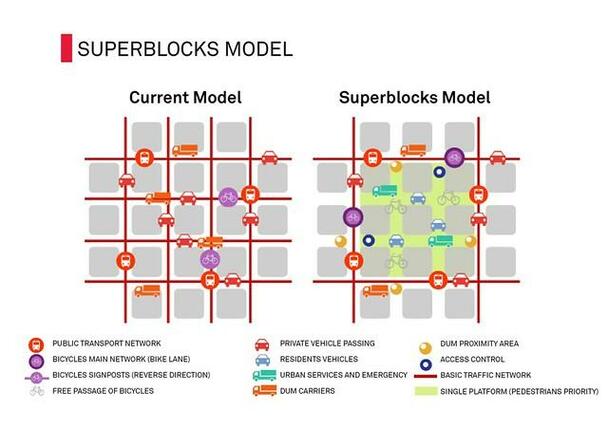
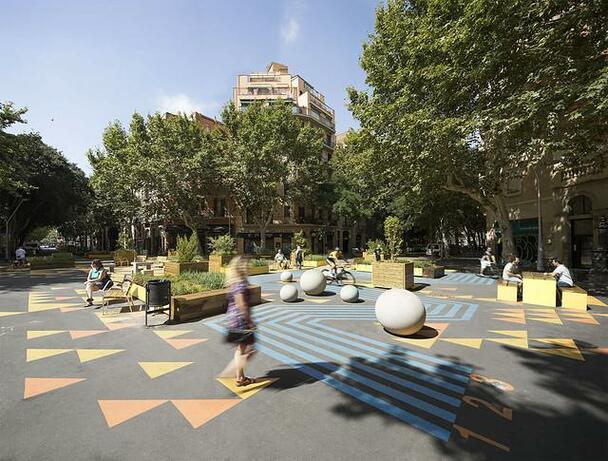
When we look to the future we realise that this new situation has added importance to the issues that were already under discussion. Before the pandemic many of these topics were discussed from a bioclimatic point of view, but now another point of view has reinforced these ideas.
One of these main topics is transport. In words of Jose Fariña (professor in urban planning) “The current system of transporting food, materials, people and energy is, quite simply, a madness that has given rise to most of the problems we currently face, such as climate change, pollution or the decline of ecosystem services, and that favours not only the emergence but also the spread of pandemics.” The amount of space given up to motorised transport in recent years does not correspond to the living pattern of the future we are starting to see in our cities, that is why main European cities like Paris, Milan or Barcelona have already set a plan to convert several kilometres of roads into cycle lanes.
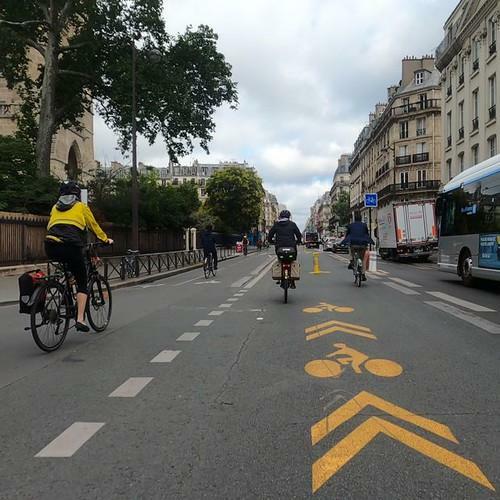
Related to this, the idea of the “15 minute cities” has been reinforced too. With this concept apart from reducing the amount of motorized vehicles in hour cities and having a better life quality in general, this idea could be very useful in the event of another pandemic in the future. One territory could be lockdown in an independent way without the need to confine an entire city.
Another of the topics is the need and accessibility of the green spaces. During the lockdown in April 2020, the "City Lab magazine" asked its readers to draw a picture of their surroundings in that period. What was surprising about the results of that experiment was the importance with which the readers had depicted green spaces. These spaces have become safe places for many people, spaces in which to carry out activities that were previously carried out elsewhere but are no longer considered safe places. But are these places really accessible? Many citizens complain that in order to access these spaces they have to walk for a long time or even take a means of transport and in many cities most of the green spaces have been moved to the outskirts so many people do not cohabit with any of these spaces. The image below is a comparison between green spaces in the city of London and only those that are public and accessible to all citizens.
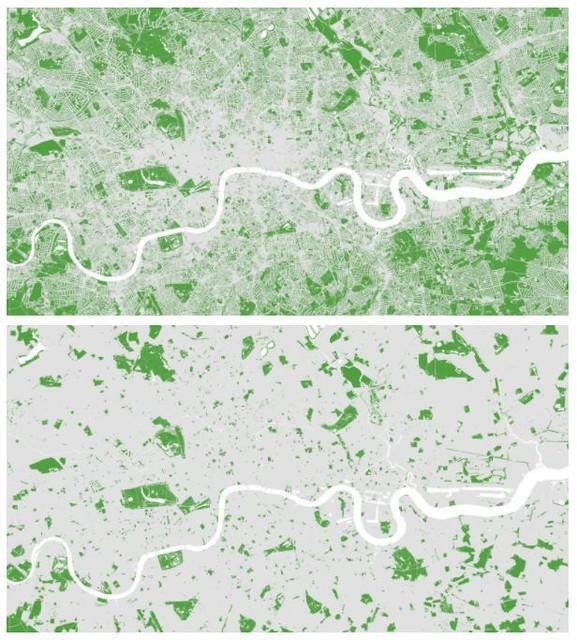
Finally, as a general idea, there is a lot of talk about equal development. After all, if there is one thing this pandemic has shown, it is that everyone is equal in the face of such a situation. Underdeveloped areas are much more difficult to control because there is neither the means nor the infrastructure to do so, which is why it is necessary for cities to develop equally in order to be able to react to possible pandemics in the future.
links:
https://ajuntament.barcelona.cat/es/
https://www.bloomberg.com/features/2020-coronavirus-lockdown-neighborhood-maps/
